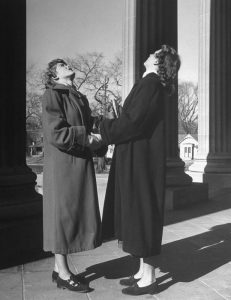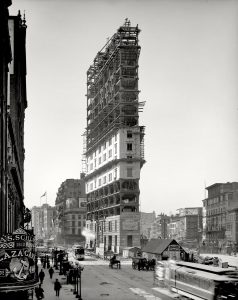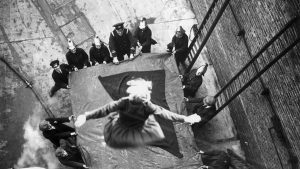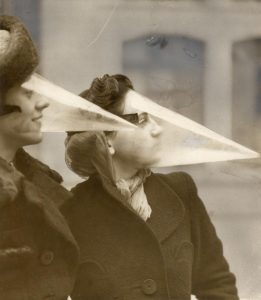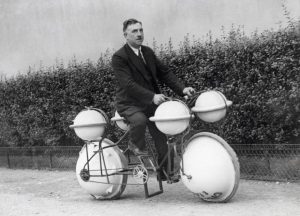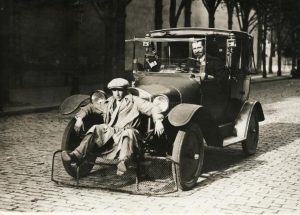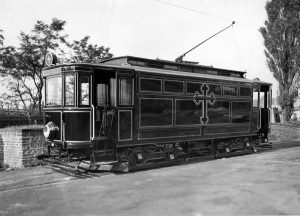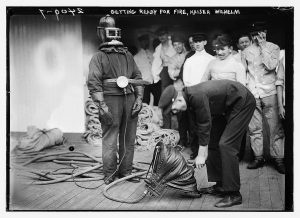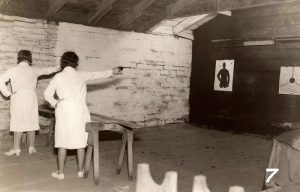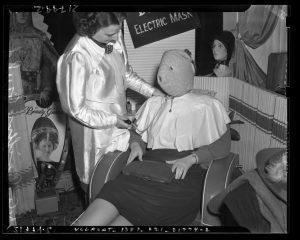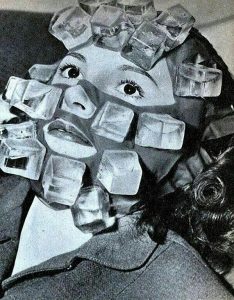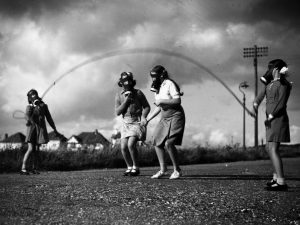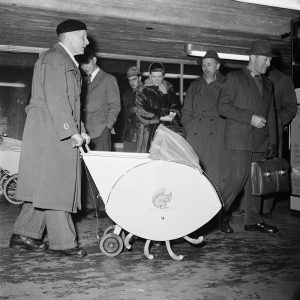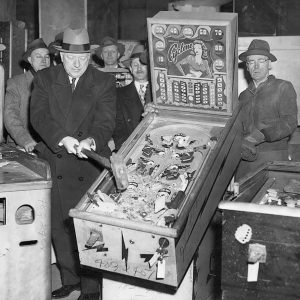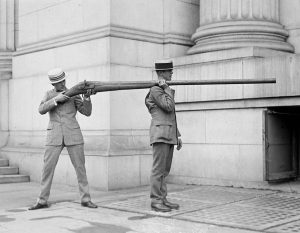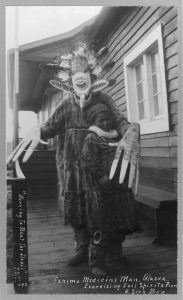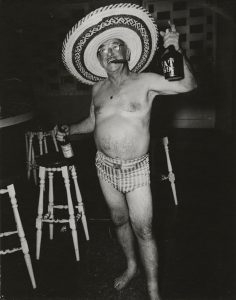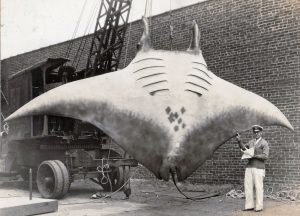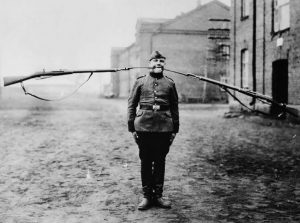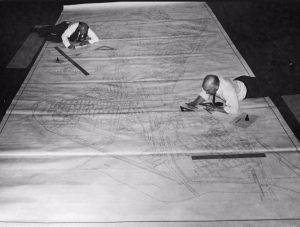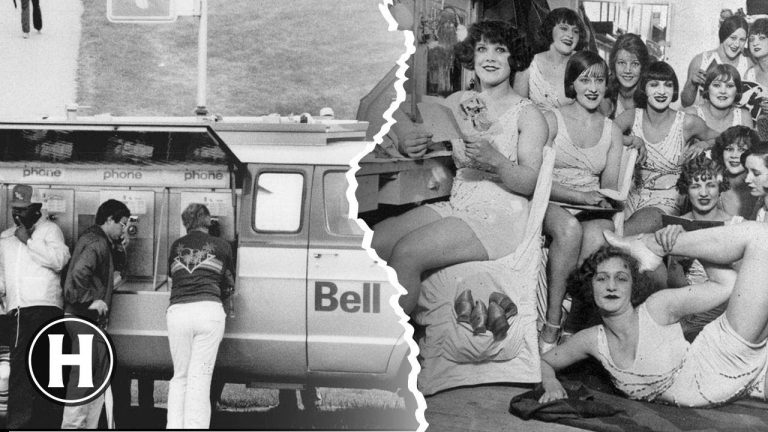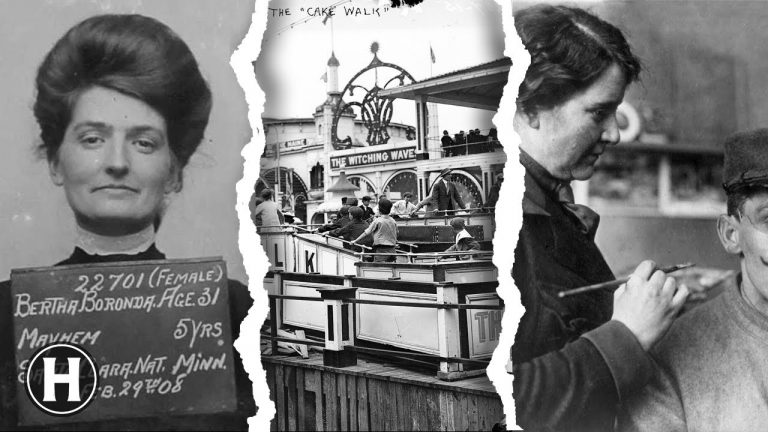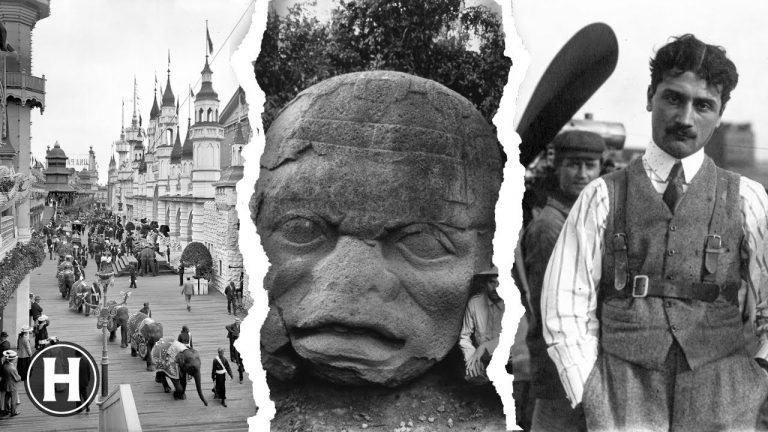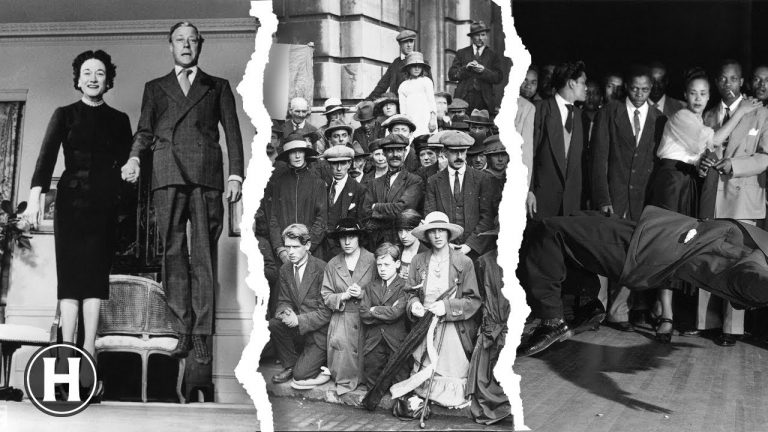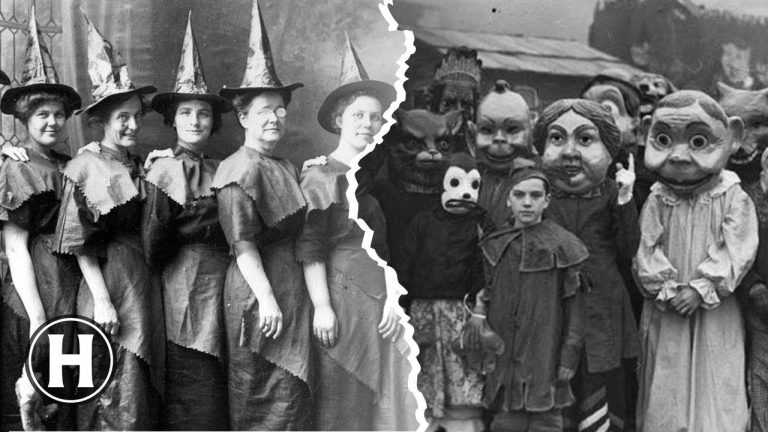Journey through time with this intriguing collection of images! From quirky trends to historical moments, innovative creations to banned artifacts, immerse yourself in a unique visual history.
Trick Talk Trend (1948)
In 1948, Des Moines area teens found amusement in “Trick Talk,” a lighthearted game where girls would engage in conversation without making eye contact. This quirky pastime provided amusement and challenged social norms.
Times Square 1903 (1903)
In 1903, Times Square transformed from derelict to vibrant with One Times Square’s construction, the New York Times’ future HQ. This icon initiated the area’s bustling transformation, emerging as a global entertainment and commercial hub.
Woman Leaps to Safety (1928)
In 1928, Achille Serre’s female firefighting brigade showcased their bravery, expertise, and gender equality as they participated in daring training exercises like jumping from second-floor windows onto fire blankets, defying societal expectations of women’s roles.
Face Cones (1939)
In 1939, “Face Cones” emerged as a quirky, fashionable accessory designed to shield wearers from harsh snowstorms. Made from celluloid, these transparent cones offered both style and practicality, serving as a precursor to today’s protective face shields.
Amphibious Bicycle (1932)
The Amphibious Bicycle, an intriguing 1932 Paris invention, could traverse both land and water, carrying a load up to 120 pounds. This extraordinary blend of ingenuity and function embodies the spirit of past cool inventions.
Safety Invention: Catch not Hit (1924)
In 1924, Parisian motorists used a unique safety invention – a pedestrian scoop. Attached to the front of cars, it aimed to catch rather than hit pedestrians, thereby reducing casualties. It was an early attempt at pedestrian safety.
Funeral Tram in Prague (1914-1918)
The Czech Funeral Tram, commissioned during WWI, was an unique infrastructure to transport fallen soldiers’ bodies in Prague, a pragmatic yet somber solution to manage wartime casualties, reflecting wartime realities and respect for the deceased.
Kaiser II Fire Gear (1912)
In 1912, Kaiser Wilhelm II’s firefighting equipment included advanced technological systems for its time. Fire hydrants were placed throughout, complemented by fire hoses connected to steam-powered pumps and automated sprinkler systems used to prevent catastrophic fires.
Shooting Lessons (1932)
In 1932, amidst societal changes and rising crime rates, an unconventional reform strategy was adopted on Roosevelt Island, New York, where incarcerated women were trained in sharpshooting in prison, challenging gender norms of the period.
Electric Face Mask (1939)
The Los Angeles Coiffure Guild, circa 1939, introduced an electric face mask, marketed as a beauty innovation. It allegedly tightened the skin and smoothed wrinkles through controlled, electro-stimulated exercises of facial muscles.
Hangover Ice Mask (1947)
In 1947, Max Factor Jr. introduced the ‘Hangover Heaven’, an ice cube mask designed to reduce swollen eyes from late-night parties. This historical beauty hack became popular amongst Hollywood actresses combating hangover-induced puffiness.
Gas Mask Games (1940)
During WWII, London children were evacuated to the South Coast, where they adapted to new norms, such as wearing gas masks during play, reflecting the stark realities of living amidst warfare in the 1940s.
Stair-Climbing Carriage (1956)
On 26th November 1956, Dr. Vilhelm Irgens Pettersson debuted his significant invention, a baby carriage capable of conquering stairs, revolutionizing the parenting world with greater mobility and accessibility, overcoming a prevalent daily hurdle.
NYC Pinball Ban (1949)
Pinball was banned in NYC from the early 40s until 1976. Here Police Commissioner William O’Brien swings a sledge hammer on one of the 2,259 machines (valued at $1M) which were being destroyed at a police garage in Brooklyn. Mar 20, 1949
Banned Punt Gun (1860s)
Punt guns, enormous shotguns, were used for commercial waterfowl hunting in the 19th-early 20th centuries. Their devastating efficiency led to a ban in the 1860s to prevent wildfowl stock depletion.
Eskimo Healer and Boy (1900s)
In the early 1900s, Eskimo medicine men treated illness by exorcising evil spirits, blending spiritual rituals with natural remedies. This practice reflected their belief in a co-existing physical and spiritual world.
Arias’ Ugly American (1950s)
“Ugly American” by Constantino Arias is a satirical depiction of 1950s American tourism in Cuba, symbolizing cultural insensitivity and hedonism, during a politically complex Batista-era.
Kahn’s Giant Manta Ray(1933)
In 1933, Captain A.L. Kahn caught a magnificent Manta Ray, reaching over 20 feet in width. A pioneer in deep-sea angling, Kahn’s record-breaking catch was celebrated with a taxidermy mount, symbolizing man’s exploration into the ocean’s depths.
Teeth-Rifle Feat (1930s)
Viljami ‘Wild Bill’ Hautaviita, a famed Finnish strongman, displayed remarkable abilities during the 1930s. Impressively holding two rifles with just his teeth, he showcased exceptional strength via jaw power, an uncommon feat even amongst strongmen performers.
Pre-Digital Cartography (1950s)
Before the advent of AutoCAD or GIS, map makers used traditional cartography methods involving manual drawing and measurements. Despite potential inaccuracies, they successfully created complex and detailed navigation guides, contributing immensely to exploration and understanding of the world.

